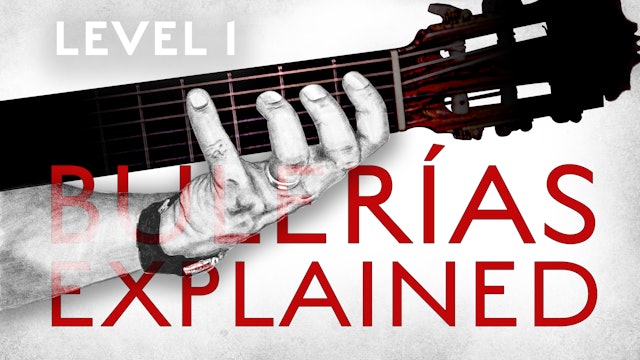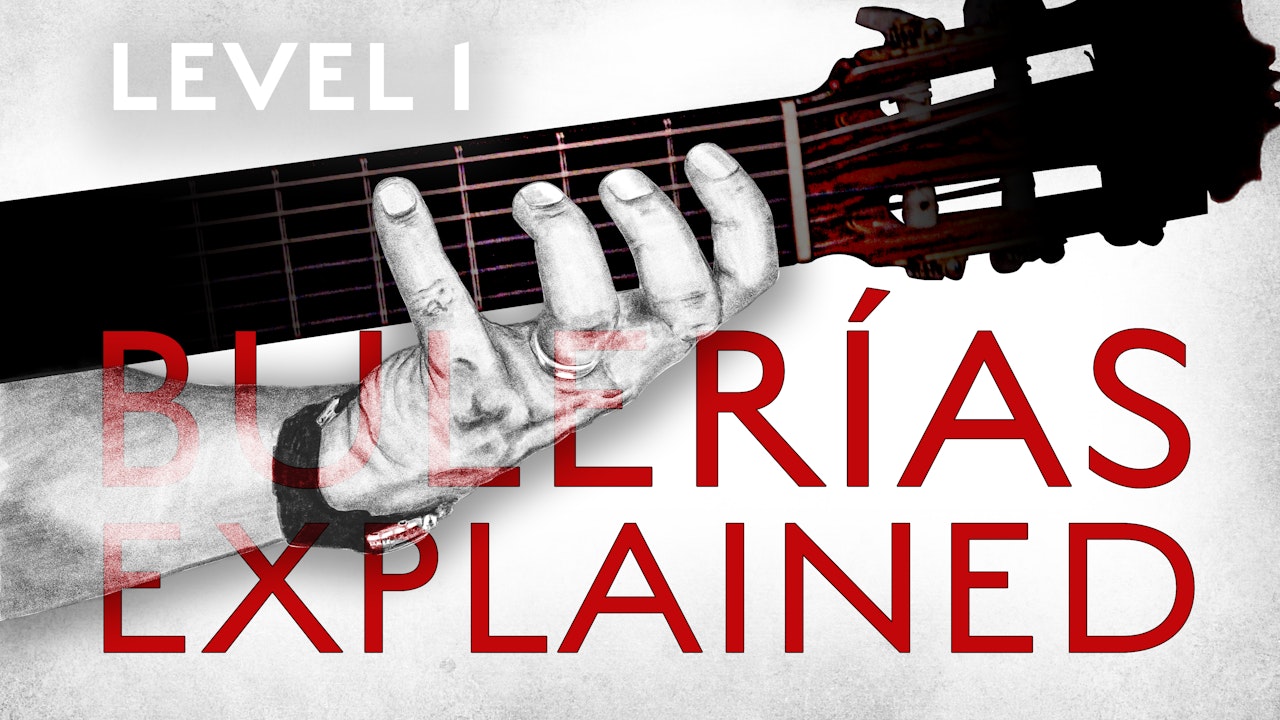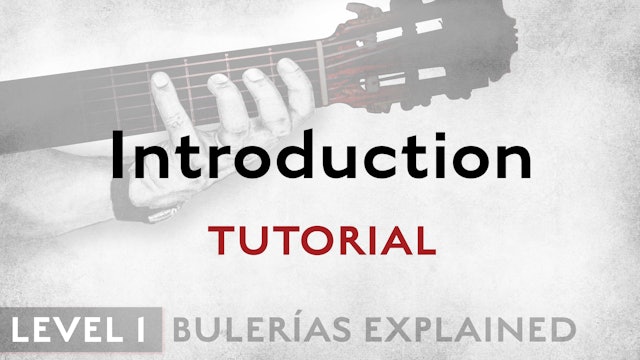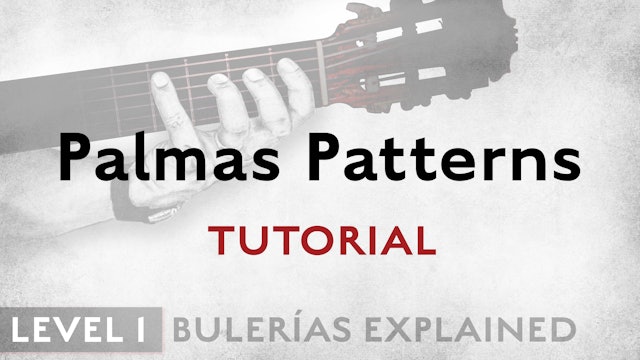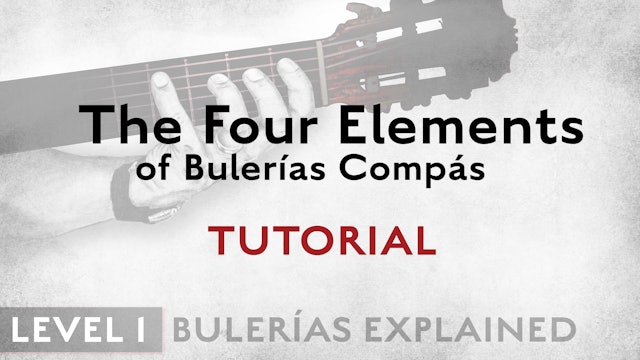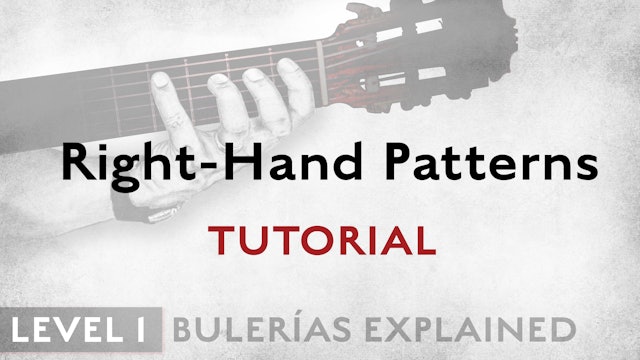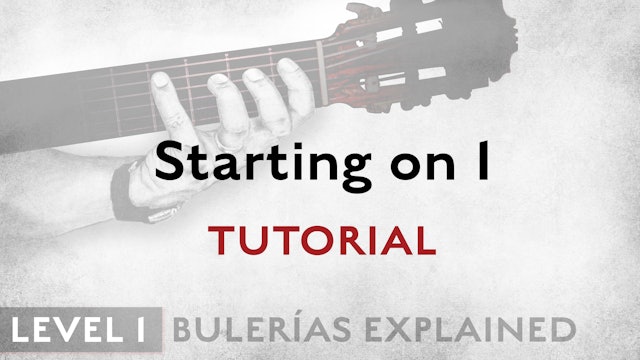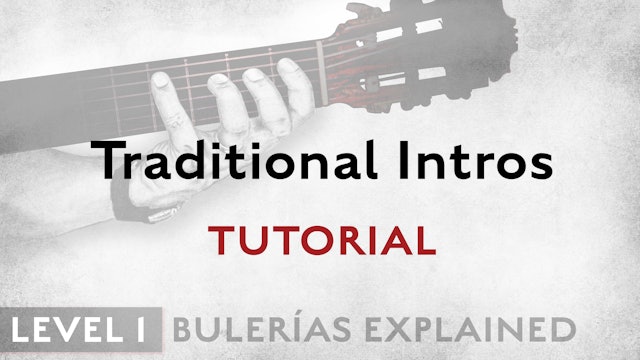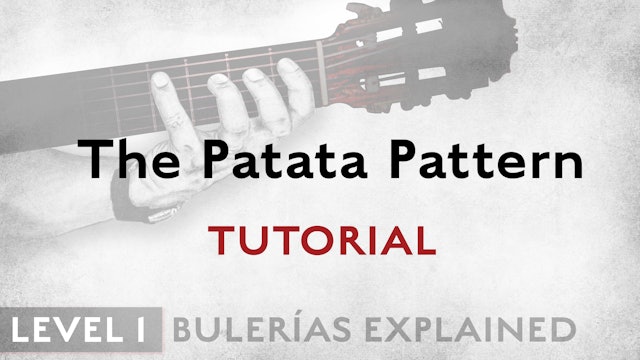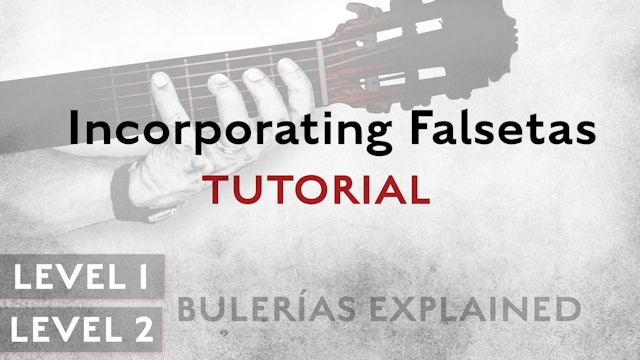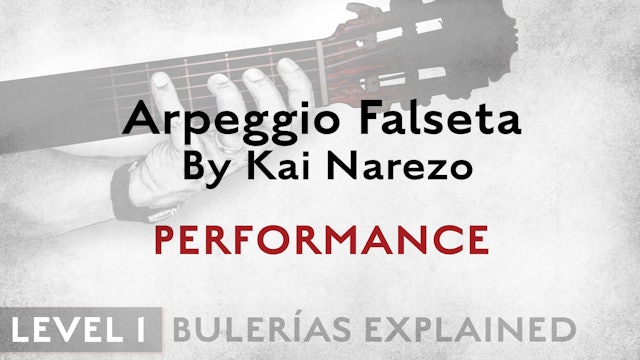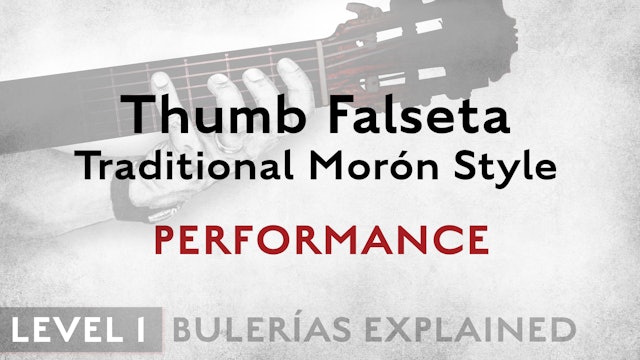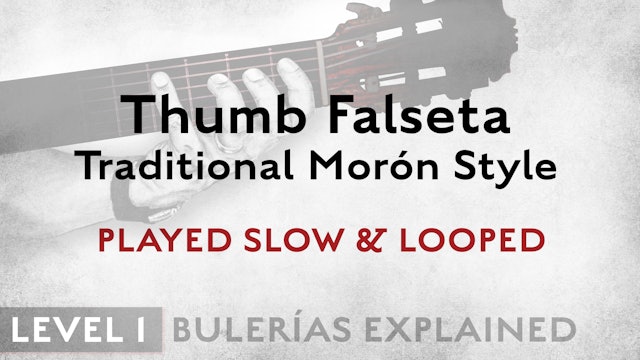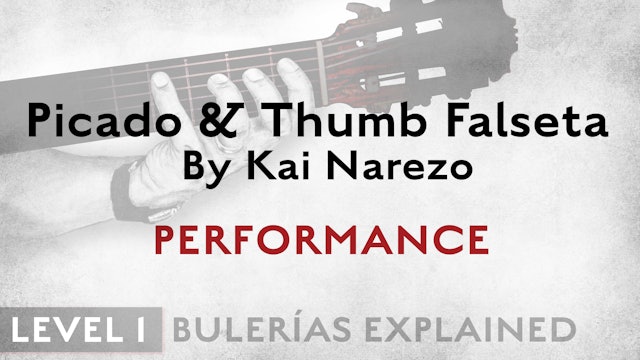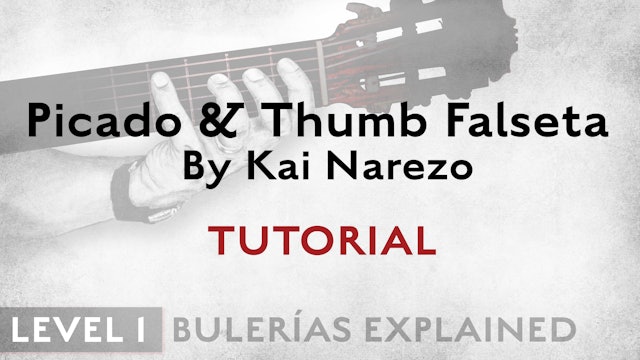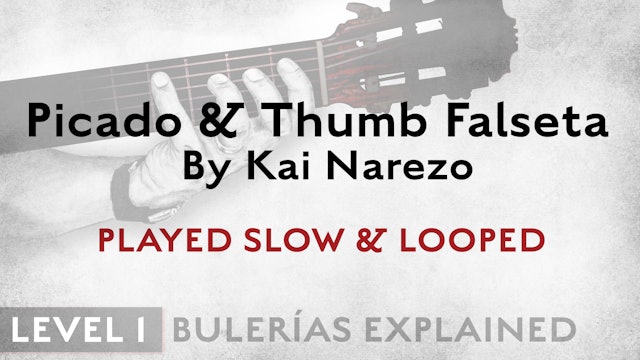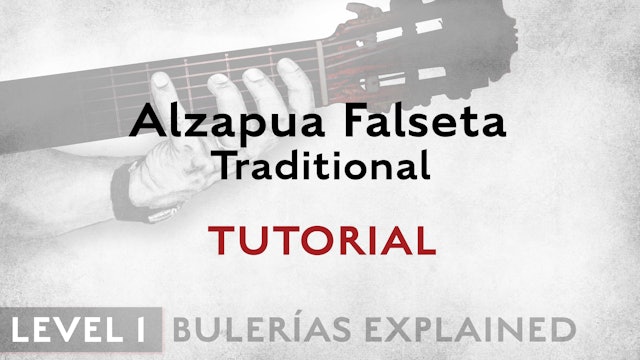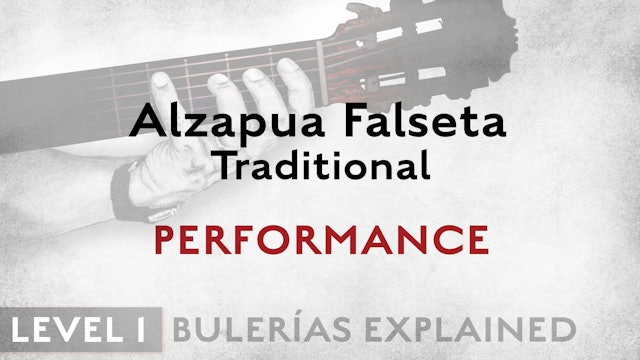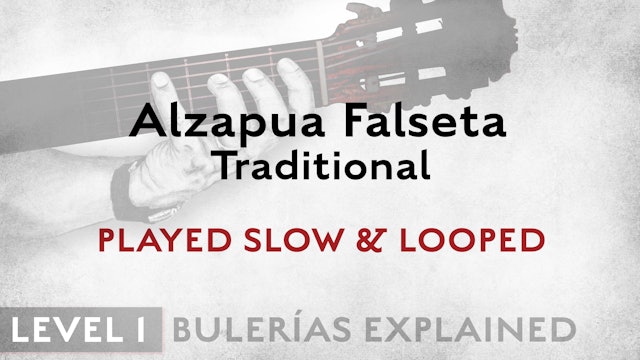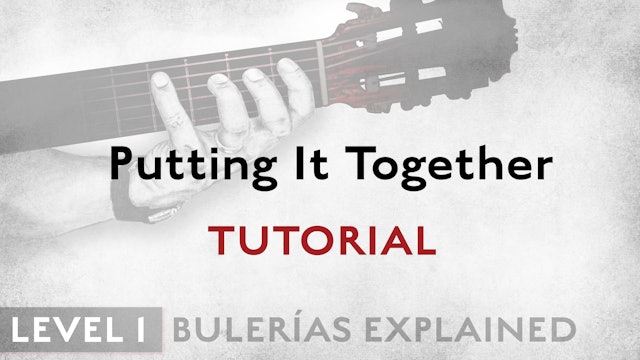Bulerías Explained LEVEL 1
23 Episodes
We highly recommend finishing our Ultimate Guide course, or having a solid understanding of Soleá, before beginning this course. While much of the material will be accessible to beginners, many of the concepts will make much more sense if you have a firm grasp of the slower 12-beat compás.
This level is an introduction to Bulerias for anyone who is new to Bulerias or is unsure about their compás. We cover the basics of compás and how to begin playing the variations that will give you freedom when playing Bulerias. We also look at a few ways to practice staying in compás while varying.
The falsetas in this level are relatively simple, though not necessarily ‘beginner level’ from a technical standpoint. [If you are an intermediate or advanced player who is new to Bulerias, you can work on falsetas from other levels while working on the Level 1 compás].
-
Bulerias Explained - Level 1 - Introduction - TUTORIAL
Episode 1
We talk about what a Bulerías is, where it’s from and how it’s used.
-
Bulerias Explained - Level 1 - Palmas Patterns - TUTORIAL
Episode 2
Before we pick up the guitar, we get the basic palmas patterns down to better understand the compás
-
Bulerias Explained - Level 1 - The Four Elements of Bulerias Compás- TUTORIAL
Episode 3
We look at a new way to organize your thinking about Bulerías compás that makes it easier to stay in compás no matter what.
-
Bulerias Explained - Level 1 - Right-Hand Patterns - TUTORIAL
Episode 4
The essential right-hand patterns you want to learn so that you can stay in compás no matter what. Learn these well and you’ll have a much easier time down the road.
-
Bulerias Explained - Level 1 - Compás Variations Second Half of Compás - TUT
Episode 5
A few ways to vary the second half of the Bulerías compás. Learning these will help you understand one of the important ways that we create more interesting and varied compás por Bulerías.
-
Bulerias Explained - Level 1 - Starting on 1 - TUTORIAL
Episode 6
How to start your Bulerías compás on beat 1, outside of the context of an intro or a Llamada. We look at a way of changing the first half of the compás while using the variations we’ve already learned for the second half.
-
Bulerias Explained - Level 1 - Traditional Intros - TUTORIAL
Episode 7
These intros are a great way to start your Bulerías, and they’ll also get you used to starting on 1, which is another very important compás element that you want to get used to.
-
Bulerias Explained - Level 1 -The Patata Pattern - TUTORIAL
Episode 8
Learn this well! Everything that follows in levels 2 & 3 uses this pattern as the foundation. If you get this under control, there is almost no reason for you ever to feel lost or out of compás por Bulerias.
-
Bulerias Explained - Level 1 & 2 - Incorporating Falsetas - TUTORIAL
Episode 9
In this crucial video for practicing to stay in compás as you add falsetas to your Bulerías repertoire, we break it down and look at a simple exercise for reinforcing good compás.
-
Bulerias Explained - Level 1 - Arpeggio Falseta by Kai Narezo - PERFORMANCE
Episode 10
A relatively simple falseta that is traditionally phrased with 8th notes starting on beat 12 and ending on beat 6, until the final longer phrase which starts on 12 and end on beat 6 of the next compás.
-
Bulerias Explained - Level 1 - Arpeggio Falseta by Kai Narezo - TUTORIAL
Episode 11
A relatively simple falseta that is traditionally phrased with 8th notes starting on beat 12 and ending on beat 6, until the final longer phrase which starts on 12 and end on beat 6 of the next compás.
-
Bulerias Explained - Level 1 - Arpeggio Falseta by Kai Narezo - SLOW & LOOPED
Episode 12
A relatively simple falseta that is traditionally phrased with 8th notes starting on beat 12 and ending on beat 6, until the final longer phrase which starts on 12 and end on beat 6 of the next compás.
-
Bulerias Explained - Level 1 - Thumb Falseta Traditional Morón Style - PERFORM
Episode 13
This is a very traditional falseta in the Morón style (Morón de la Frontera is a town not too far from Sevilla that’s famous for its flamenco). The falseta is relatively simple and involves thumb technique in the right hand and some slurs in the left hand. The phrasing is very traditional and thi...
-
Bulerias Explained - Level 1 - Thumb Falseta Traditional Morón Style - TUTORIAL
Episode 14
This is a very traditional falseta in the Morón style (Morón de la Frontera is a town not too far from Sevilla that’s famous for its flamenco). The falseta is relatively simple and involves thumb technique in the right hand and some slurs in the left hand. The phrasing is very traditional and thi...
-
Bulerias Explained - Level 1 - Thumb Falseta Traditional Morón Style - SLOW/LOOP
Episode 15
This is a very traditional falseta in the Morón style (Morón de la Frontera is a town not too far from Sevilla that’s famous for its flamenco). The falseta is relatively simple and involves thumb technique in the right hand and some slurs in the left hand. The phrasing is very traditional and thi...
-
Bulerias Explained - Level 1 - Picado & Thumb Falseta by Kai Narezo - PERFORM
Episode 16
The first Bulerías falseta I ever wrote 🙂 Each phrase is made up of 8th notes that start on 12 and end on 6, so by now it should just be a matter of learning the notes.
-
Bulerias Explained - Level 1 - Picado & Thumb Falseta by Kai Narezo - TUTORIAL
Episode 17
The first Bulerías falseta I ever wrote 🙂 Each phrase is made up of 8th notes that start on 12 and end on 6, so by now it should just be a matter of learning the notes.
-
Bulerias Explained - Level 1 - Picado & Thumb Falseta by Kai Narezo - SLOW/LOOP
Episode 18
The first Bulerías falseta I ever wrote 🙂 Each phrase is made up of 8th notes that start on 12 and end on 6, so by now it should just be a matter of learning the notes.
-
Bulerias Explained - Level 1 - Alzapua Falseta Traditional - TUTORIAL
Episode 19
This Alzapua falseta is relatively simple but has one new feature, which is that rather than start on beat 12 it starts on beat 11. Thinking of beat 11 as a pickup to a downbeat on beat 12 can help make this feel more natural.
-
Bulerias Explained - Level 1 - Alzapua Falseta Traditional - PERFORMANCE
Episode 20
This Alzapua falseta is relatively simple but has one new feature, which is that rather than start on beat 12 it starts on beat 11. Thinking of beat 11 as a pickup to a downbeat on beat 12 can help make this feel more natural.
-
Bulerias Explained - Level 1 - Alzapua Falseta Traditional - SLOW & LOOPED
Episode 21
This Alzapua falseta is relatively simple but has one new feature, which is that rather than start on beat 12 it starts on beat 11. Thinking of beat 11 as a pickup to a downbeat on beat 12 can help make this feel more natural.
-
Bulerias Explained - Level 1 - Starting & Ending Your Bulería - TUTORIAL
Episode 22
We look at some traditional ways to begin and end your Bulerías, whether you’re playing a solo piece or accompanying. Th tricky part is that both the intros and the endings start on beat 1.
-
Bulerias Explained - Level 1 - Putting It Together - TUTORIAL
Episode 23
Using all of the material you’ve learned so far to put together a solo guitar Bulerías. It’s not really that different from anything we’ve done in other courses as long as you stay on top of the connections between all things.

